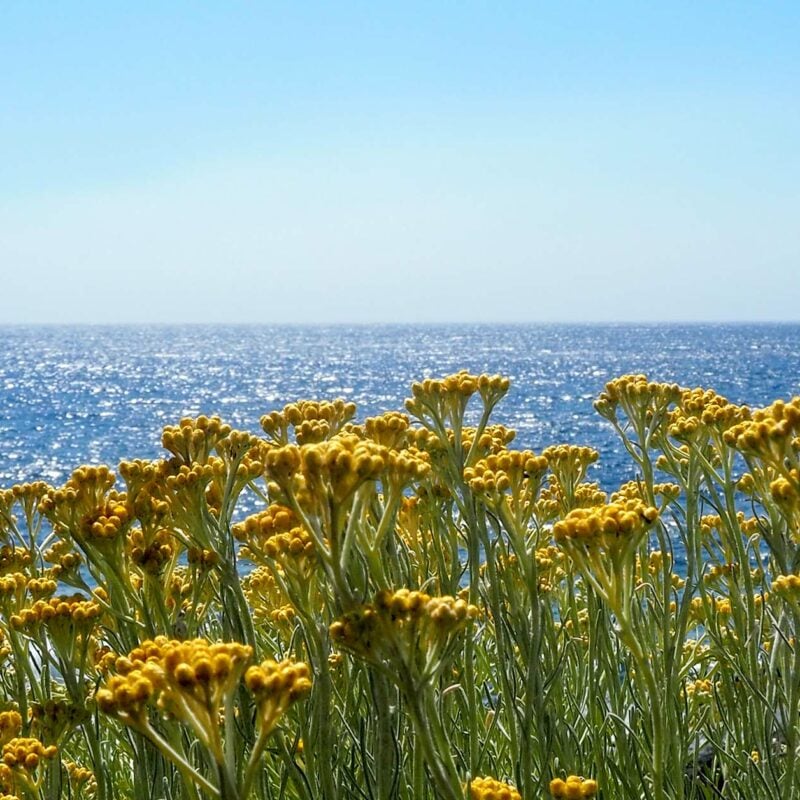
Pantelleria
Pantelleria holidays: a guide around the island
The island of Pantelleria is honest and genuine: it speaks directly to visitors on a spiritual level and does not seek to hide its true character. It is a place where nature still prevails over the human, and where harmony can be found in the natural rhythms that the island imposes on its inhabitants.
The Phoenicians called it Yrnm, island of the ostriches; the Greeks, Kosuros-Kossoura; the Romans, Cossura-Cossyra or the “little one”, perhaps to distinguish it from nearby Malta; and, finally, the Byzantines knew it under both its ancient name of Cossyra and that which it is known as today: Pantelleria.
There are many theories as to the etymology of the modern name, but none offer a full explanation of the mystery. However, evidence for Cossyra’s glorious past can still be seen in the archaeological remains of its tombs (or sesi), defensive wall and village huts, which date back perhaps 5000 years. They are testament to a people dedicated to obsidian working, agriculture and fishing.
A series of volcanic eruptions 500,000 years ago formed part of the island and the most recent eruption, in around 6000 B.C., brought us Pantelleria as we know it today. Throughout its young life the island has undergone many physical changes and nowadays seems at its most serene. Its turbulent past has left its mark in the form of jets of hot steam (or favare), the natural sauna at the Bagno Asciutto, the thermal springs, the powerful volcanic cauldron that now extends into the stunning, fertile valleys of Monastero and Ghirlanda, and, last but not least, the dazzling lake known as the “Mirror of Venus”.
It would be a mistake to think of Pantelleria purely as a summer seaside destination. There are many alternatives to the sea on the island, such as Montagna Grande – a large, natural park 2600 ft above sea level, with numerous hiking trails. It is possible to explore the entire island on foot, and we believe this is the best way to soak up the natural atmosphere: just breathe in the intoxicating floral scents and revel in the silence. The fields with their criss-crossing paths offer a unique insight into the character of the islanders, who abandoned the sea and carved out a more fertile landscape from these harsh rocks. It is for this reason that the island is often regarded as belonging more to the land than to the sea.
However, for sea lovers, Pantelleria offers rocky coasts and shallow waters that are ideal for diving. The coastal vista is a spectacular one, with luminous reflections from the waves forming curious shapes on the black rocks. As one of the most unspoiled marine areas in the Mediterranean basin, the sea here is home to lush seagrass meadows and coral reefs that support many kinds of sea fan and rare black coral. The geographical location of the island also explains why so many archaeological finds have been made in the surrounding waters.
Pantellerian cuisine is heavily influenced by the food imported by the various rulers of the island, and so it is not just limited to seafood: visitors should try the fish couscous from nearby Africa, always served with a variety of greens and other vegetables; “sciakisciuka”, a hot vegetable stew; and the extremely tasty local zucchini, a real delicacy that is not to be missed.
And, of course, let’s not forget the island’s famous capers, the delicately-flavored tumma (a soft, fresh cheese) and the fabulous oregano that all help give Pantellerian food its special taste.
Pantelleria offers very simple, uncomplicated cuisine, and the same holds true in the various restaurants across the island.
Finally, a special mention must go to the Passito di Pantelleria, an ancient wine that today is in danger of becoming just another tourist product. Fortunately, there are still honest producers on the island who, despite the costly and labor-intensive production process, go great lengths to continue making this wine.
And in 2014, thanks to their stubbornness the traditional agricultural practice of cultivating the ‘vite ad alberello’ (head-trained bush vines) of the community of Pantelleria was registered on the Representative List of the Intangible Cultural Heritage of Humanity of UNESCO.
In short, Pantelleria’s charm lies in the island as it is and not in what it could become. It requires deep understanding and a love that escapes rational explanation.
Welcome to Pantelleria.
-

Pantelleria Vineyards
The absolute master of all the terraces and plateaus the […]
-

Coastline
The coastline of Pantelleria view from the sea reveals to […]
-

Sillumi
A little-known valley, but full of breathtaking landscapes… From the […]
-

Sibà
It’s the mountain community of Pantelleria and it’s among the […]
-

Scauri
The western side village, gaze towards Africa coastline and red […]
-

Salto la vecchia
“Jump of the old woman” the most spectacular cliff on […]
-

Punta Spadillo
“(The lighthouse) Towered, naked and straight, sparkling, white and black […]
-

Pantelleria Village
And while the relentless pace of the big city does […]
-

Nikà
In spring, the brooms are blooming and their scent overwhelm […]
-

Mursia
The valley of Mursia was presumably the first settlement of […]
-

Montagna Grande
There she is (we love to refer to the mountain […]
-

Monastero
One of the best examples of natural architecture and a […]












